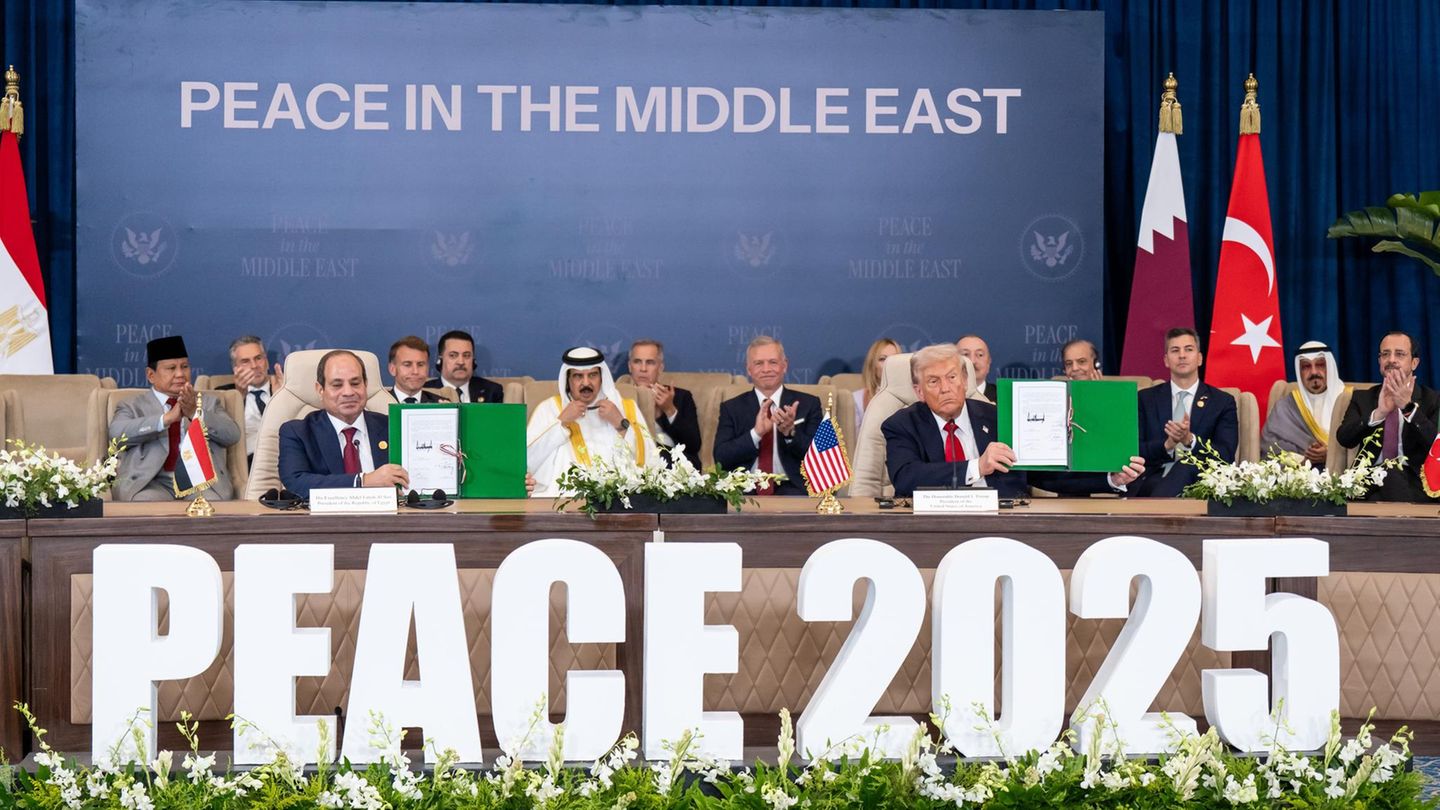The exchange band regime could travel its last weeks, with the price of the dollar that seeks to cross that imaginary limit.
Understood as the axis of phase 3 of his economic plan, the president Javier Milei and the minister Luis Caputo They meditate on how to continue. Strictly The flotation band regime is under increasingly intense technical scrutiny. With the official exchange rate, quoting between $ 1,340 and $ 1,380, and the upper limit located at $ 1,467, the Central Bank of the Argentine Republic (BCRA) closely watches any movement that brings the dollar to the ceiling.
This scheme, designed to combine a controlled flotation with the accumulation of reserves, faces increasing tensions derived from market expectations. This reinforced the will of the government to add regulations almost daily to corner the weights that banks maintain, to which the limitations imposed by the International Monetary Fund (IMF). In rigor, the fact is that official sources have reiterated, during the weekend, their commitment to prevent the dollar from reaching the upper limitespecially in a pre -election context marked by the elections of September 7 in Buenos Aires and the national elections.
LIVING FINANCE MARKETS ACTIONS INVERSIONES INVERSIONS DOLAR BONDS
Depositphotos
The contracts of future dollar In the ROFEX market (now renamed A3 after fusion with MAE) they reflect a growing skepticism about the sustainability of exchange bands. The contributions for the coming months-with projections of $ 1,500- $ 1,550 for December-exceed established ceilings: $ 1,482 at the end of September, $ 1,497 at the end of October, $ 1,511 at the end of November and $ 1,527 at the end of December. These figures suggest that Operators anticipate an exchange rate above the official limitswhich implies a significant risk premium. The expectation of a higher official dollar reflects fears of exchange delay and A possible scheme rupturedriven by electoral uncertainty and a projected recession of 3-4% by 2025, which limits the capacity of the BCRA to stabilize the market without compromising reservations.
The mysterious path that crosses in a few weeks
The technical design of the exchange bands, with a decreasing floor (-1% monthly, which led it to $ 950 in August) and a growing roof (+1% monthly), seeks to balance the accumulation of reserves with a partial liberalization of the exchange market. However, its divergent character generates medium -term uncertaintysince the gap between the floor and the ceiling is extended progressively. For example, while the ceiling amounts to $ 1,467 in August to $ 1,527 in December, the real exchange rate has been appreciated 10-12% since April, adjusted by inflation, which reduces export competitiveness and aggravates economic cooling. This dynamic feeds Market bets due to a devaluation or abandonment of the schemeespecially if the official dollar approaches the projected levels for the coming months.
Government Sources said the Executive is willing to forceful measures to prevent the exchange rate from reaching the ceilingprioritizing stability in a critical electoral scenario. Among the options considered are specific interventions in the market, such as limited sales of dollars or a hardening of financial controls to discourage speculative demand. However, these actions face a key restriction: A confidential clause in the agreement with the IMF, anticipated by scope, that limits the capacity of the BCRA to sell reservations significantly. This commitment, part of the understanding for US $ 20,000 million signed in April, prioritizes the accumulation of currencies on active interventions in the exchange market, which reduces the government’s margin of the government to defend the superior band.
Delete bands, a previous option to sell dollars
Faced with these limitations, sources close to the economic team have stated that it is not unimaginable to consider the possibility of eliminating exchange bands if speculative pressures intensify and the wardly rise of rates, lace and tenders is not sufficient. The suppression of the fixed roof – which goes from $ 1,467 in August to $ 1,527 in December— It could discourage operators who seek to force reservations sales As you approach the upper limit, such as $ 1,482 projected for September or $ 1,497 for October. However, this measure would imply significant risks: a freer flotation could shoot the parallel dollar, whose current gap (10-15%) could be extended, reviving inflation (projected in 3-4% monthly). This, in turn, could negatively impact Milei’s positive image, which according to recent surveys has fallen to a range of 40-46% in August, after a peak of 53% in June.
The technical dilemma of the government lies in swinging exchange stability with IMF restrictions and market expectations. If the official dollar approaches $ 1,482 in September or $ 1,497 in October, the BCRA could be forced to choose between allowing A controlled devaluation within the band or abandon the scheme to avoid reservations. Any of these options would have political implications, especially in a context where the perception of stability is crucial for the ruling party for the elections. The accumulation of reserves, although solid, does not guarantee immunity against external shocks or internal speculation, which makes the management of the upper band a determining factor for the economic direction.
Source: Ambito




